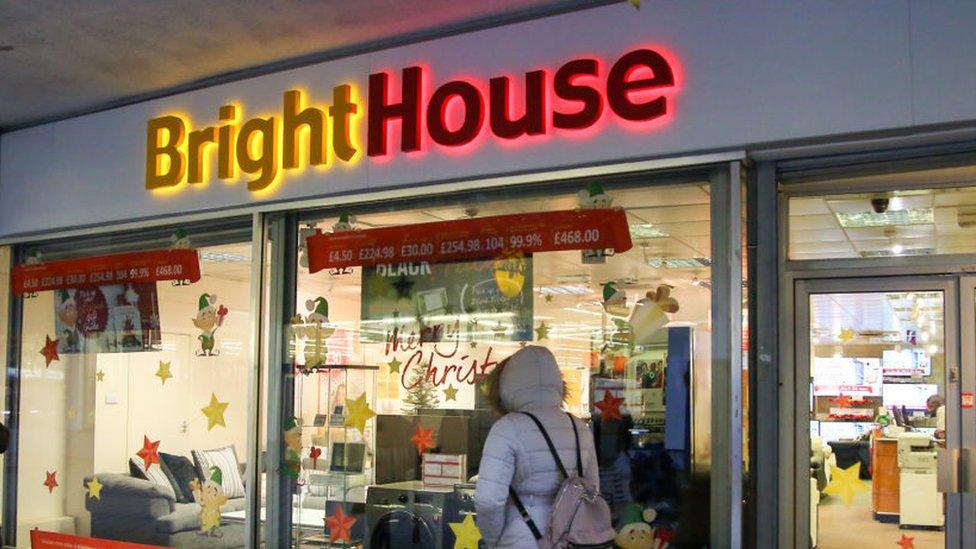Rent-to-own firm Brighthouse calls administrators
- Published

Rent-to-own giant BrightHouse is close to collapse, the ┤¾¤¾┤½├¢ understands, putting 2,400 jobs at risk.
The company is expected to fall into administration on Monday after facing an influx of compensation claims for selling to people who could not repay.
Stricter lending rules had put the business under strain long before shops were closed owing to coronavirus.
BrightHouse has 200,000 customers and is the largest operator in the rent-to-own sector.
Rent-to-own customers make monthly payments for household items, in effect renting goods until they have paid in full. Many are on low incomes and find it difficult to access credit from mainstream lenders to pay for fridges, TVs, washing machines and other electrical items.
What should customers do?
BrightHouse customers, about a third of whom are in work, will continue with payments, even if the company goes into administration.
Debt adviser Sara Williams, who writes the , said: "Now the company is expected to go into administration, customers need to think if they can manage to make the repayments.
"If their income has fallen because of coronavirus, they should ask for a payment break. And if the item is just too expensive, they should ask for a lower payment arrangement. They may be able to make an affordability complaint and get a refund of the interest they have paid on previous items."
The expected collapse, , would see 240 shops close unless a buyer is found.
In January, the business said it was under pressure from dealing with mis-selling claims.
Alongside many other lenders of high-cost credit, the company was being challenged by people who said they were given credit when they would never have been able to afford the repayments.
This came after rules, introduced last year, which restricted the cost of rent-to-own, following claims of spiralling debts.
How much have people paid?
The Financial Conduct Authority (FCA), the City watchdog, ruled that interest charged would be capped to as much as the cost of the product.
Prices were also controlled, with shops only able to charge no more than the median - the middle price - of three mainstream retailers, including delivery and installation charges.
Shops were also prevented from increasing their prices for insurance premiums, extended warranties, or arrears charges, to recoup lost revenue from the price cap.
Before the rules were brought in, spiralling interest charges meant some rent-to-own consumers had ended up paying more than four times the retail price they would have paid in normal shops.
- Published5 March 2019
- Published22 November 2018
- Published4 July 2016